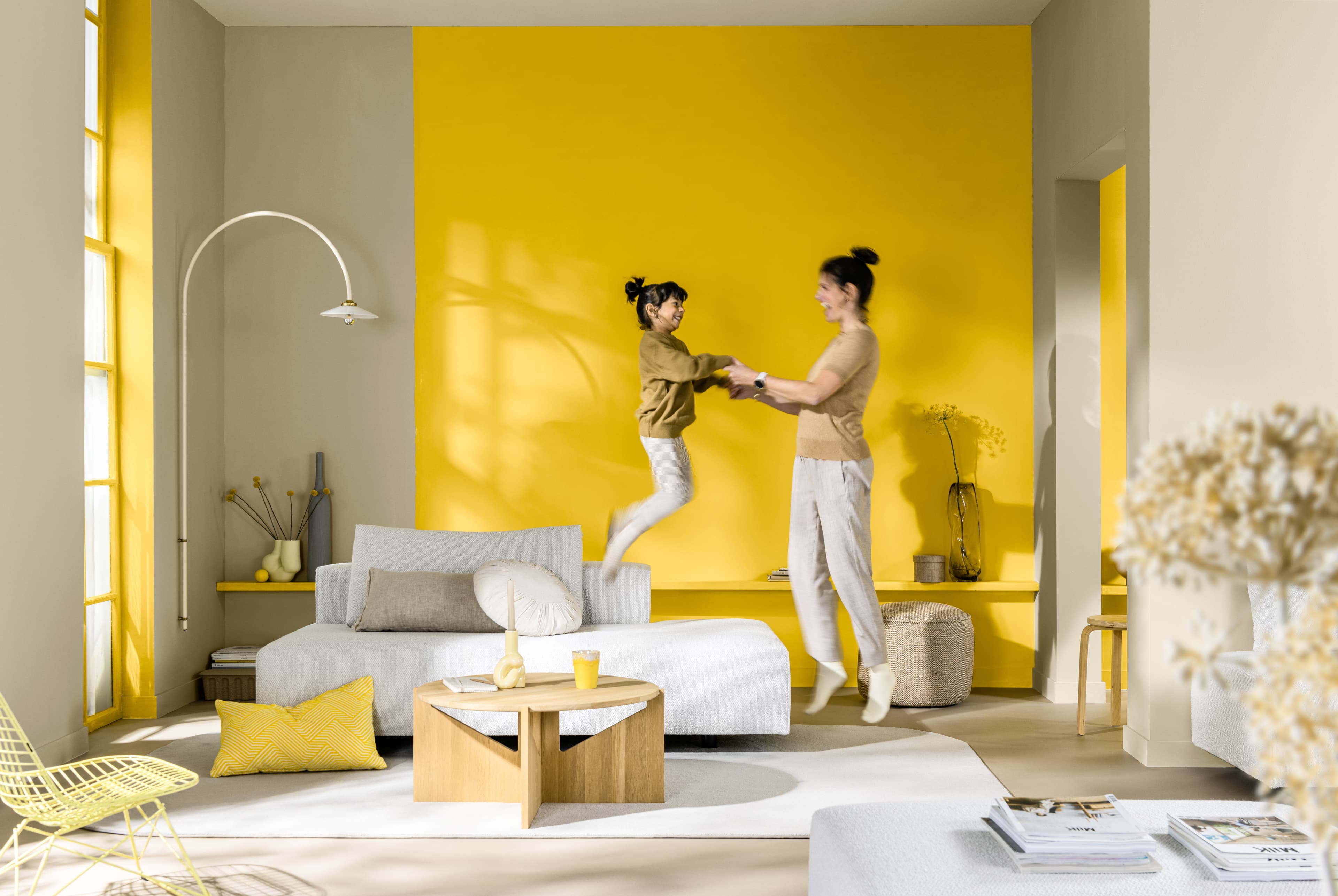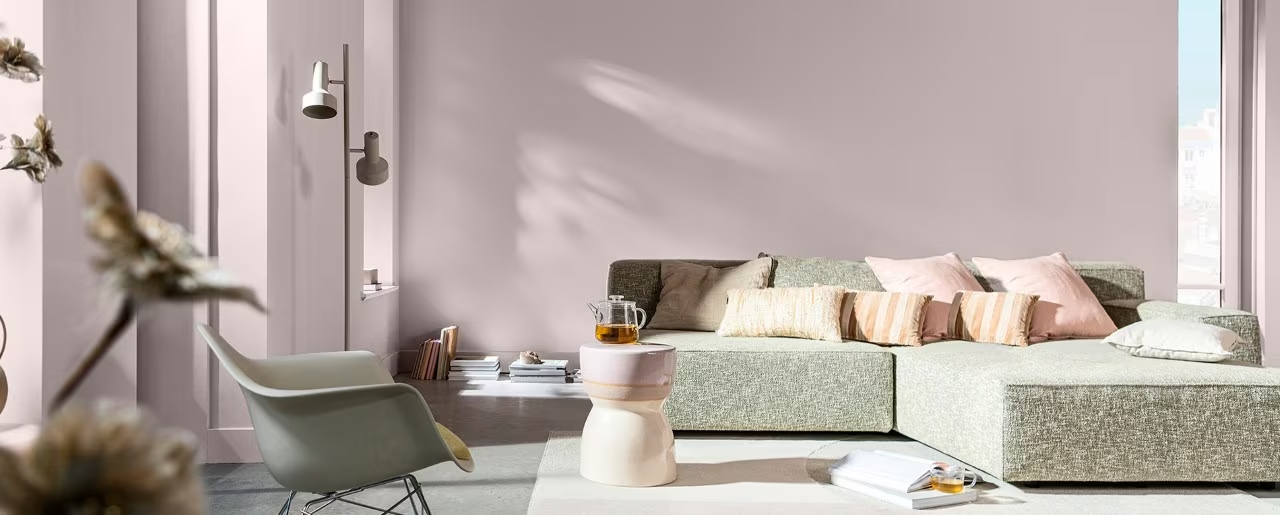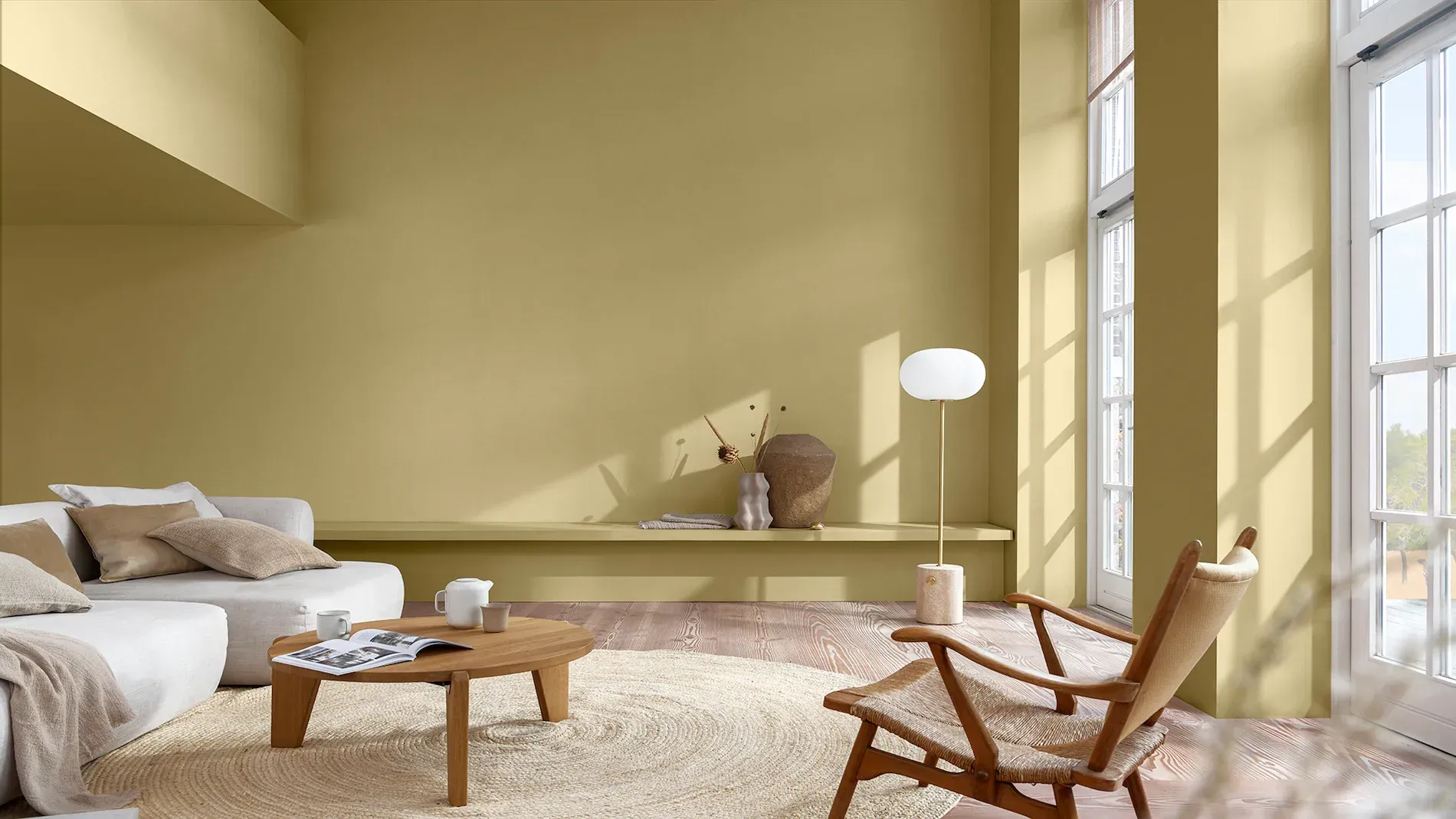Coral & Dulux Colour of the Year 2024, Sweet Embrace™ is a versatile foundation colour that combines beautifully with many other shades. This makes it ideal for any number of paint effects, such as this striking colour-flow feature wall.
Using our Colour of the Year plus two other shades from the Uplifting colour story, you can create a subtle gradient of colour that will bring a softness to any room. Ready to get started? Here’s how to get the look…
What you'll need:

- Tin of each of your chosen paint colours
- Paint stirrers
- x3 small rollers and tray
- x3 medium-size, wide paint brushes with synthetic fibres
- x1 small paint brush (optional)
- Tape measure
- Pencil
- Scissors
- String
- Chalk
- Masking tape
- Paint tin opener
- Gloves
Step 1: Measure and mark
Using a tape measure and a pencil, mark the halfway point on the wall.

Step 2: Make a guideline
Cut a long length of string and, using masking tape, stick either end to the edge of the wall at the height of your pencil mark. Cover the string with chalk and ping it against the wall to make a horizontal chalk guideline.
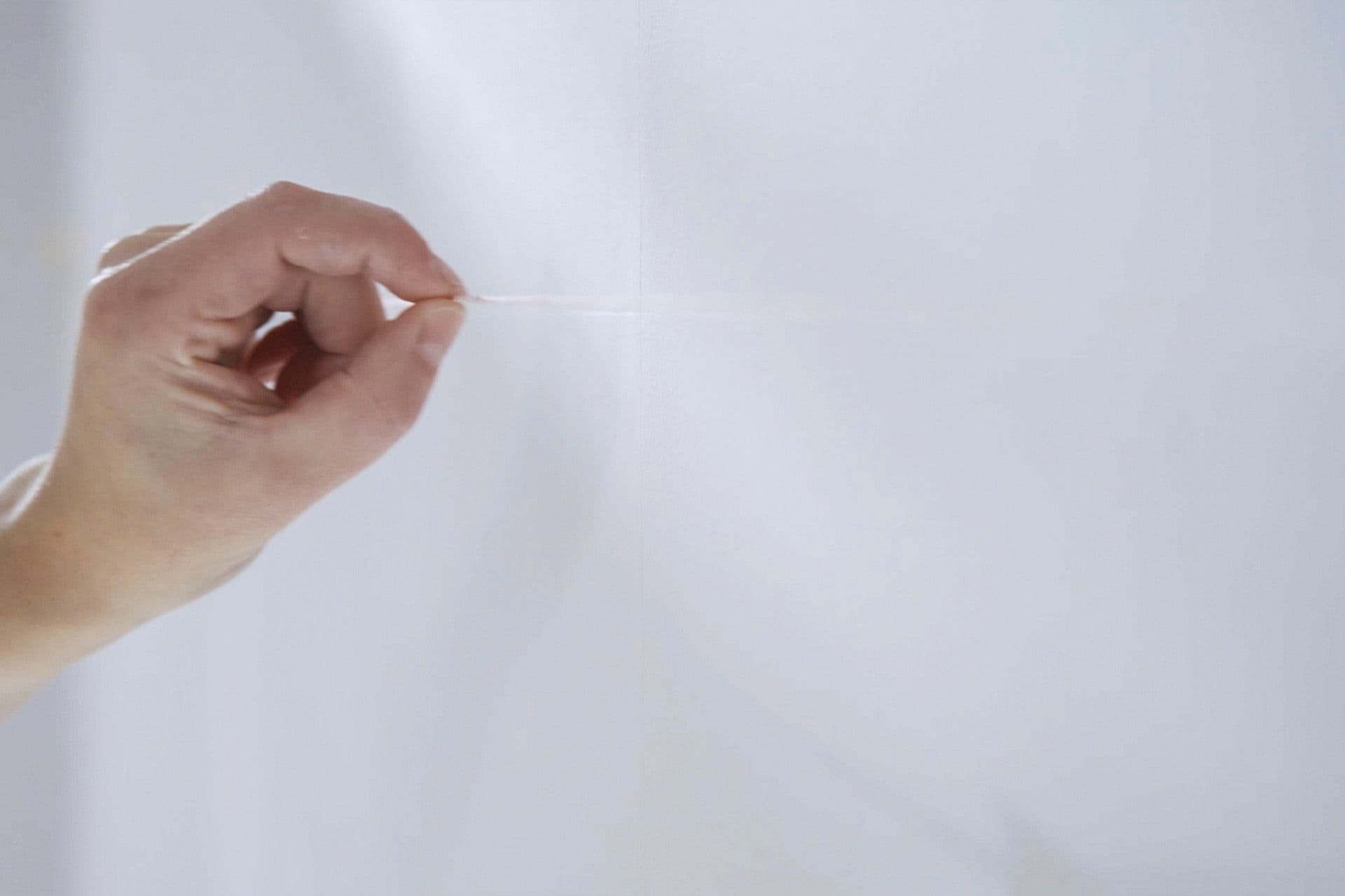
Step 3: Start painting
Paint the top half of the wall in Sweet Embrace™ using a roller.
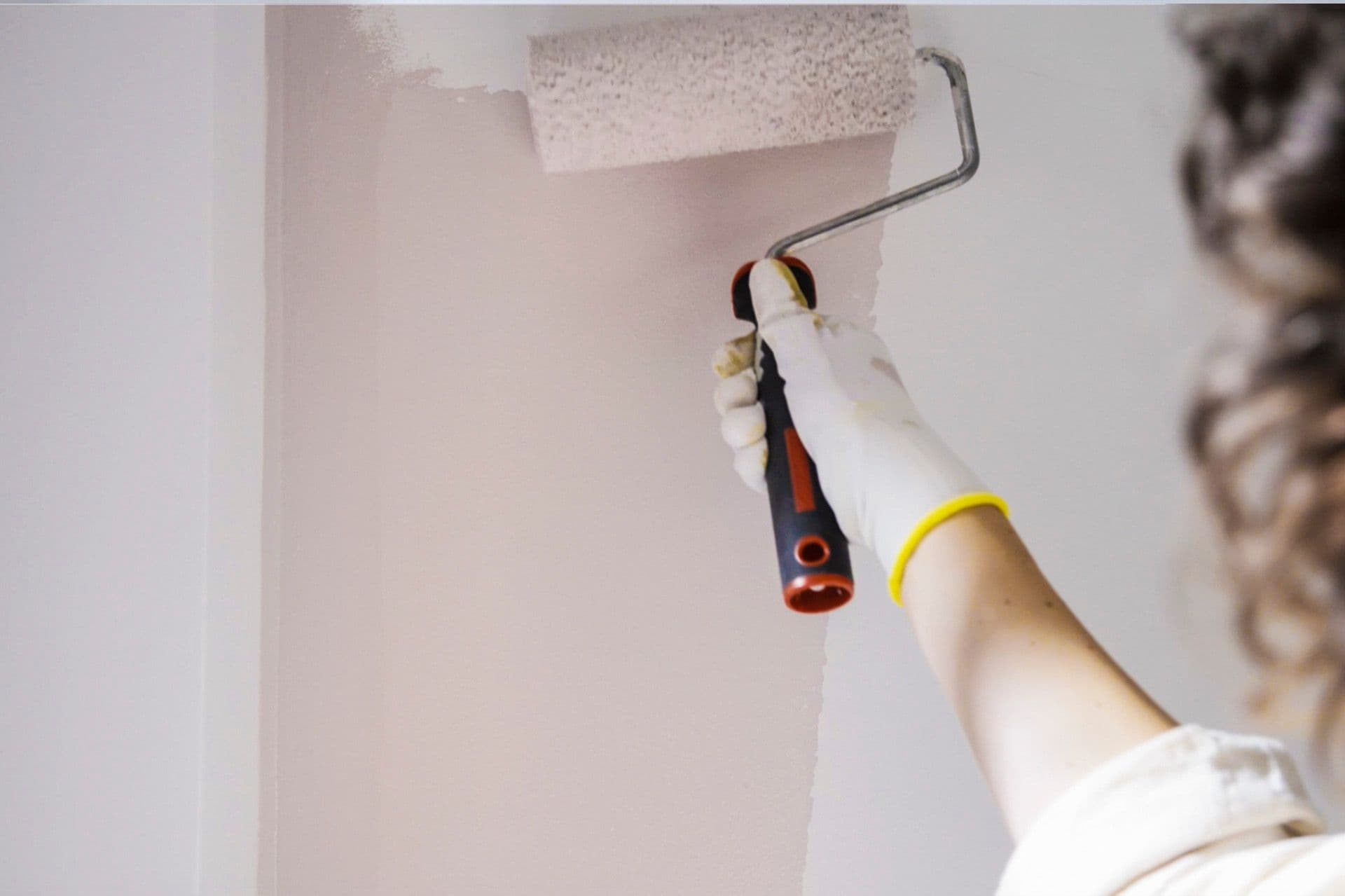
Step 4: Apply your second colour
While the first colour is still wet, apply a wide band of the second colour underneath. Here, we used a soft ochre to complement Sweet Embrace™.

Step 5: Blend the colours
While both colours are still wet, use a criss-cross motion to blend the colours together. You’ll need to work quickly with two brushes, blending upwards and downwards simultaneously for a smooth effect.
Blend upwards with one hand, lightly brushing the bottom colour into the top section. Blend downwards with the other hand, lightly brushing the top colour into the section underneath.
Top tip: It’s a good idea to practice this technique on paper or cardboard before you start painting, so that you can feel confident about blending smoothly before attempting it on the wall.

Step 6: Paint and blend again
Using a roller, paint the bottom section of the wall in your third colour up to the painted section, and repeat the blending steps above where the second and third colours meet. Use a soft brush to feather the edges.
That’s it! Now step back and take in your transformation.


